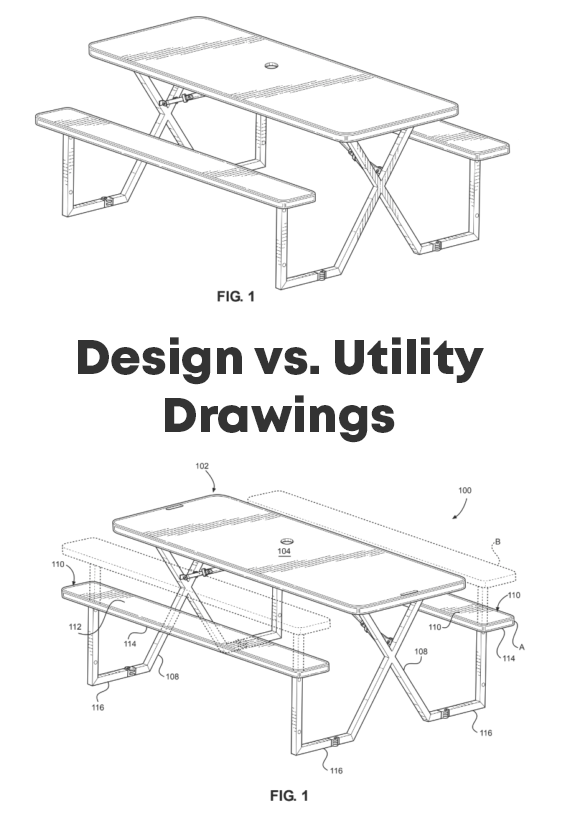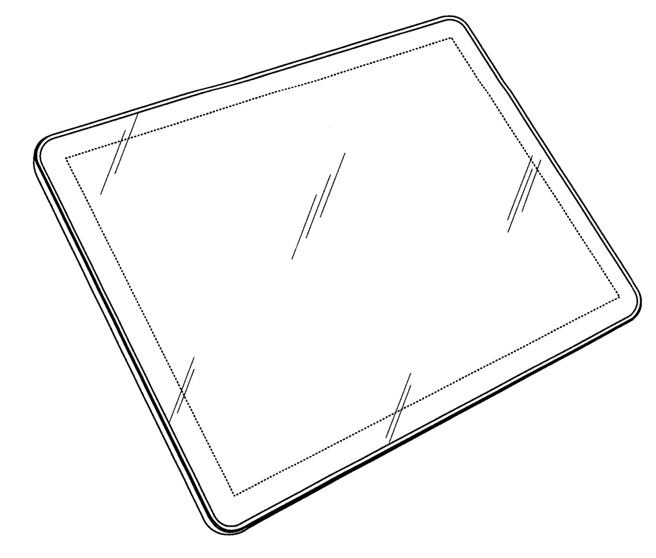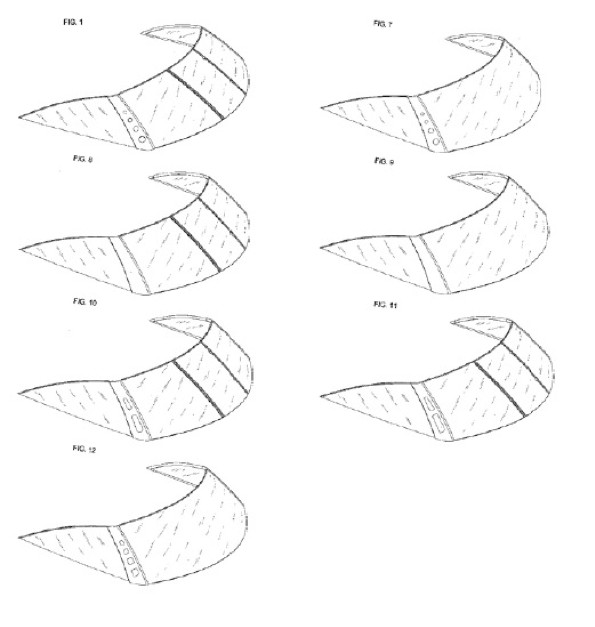Best Practices for Preparing Design Patent Drawings
Two of the most common types of patents are utility and design patents. When filing for a patent, you may be wondering which one you should file. In this article, we’ll cover some of the main differences between the two patents as well as best practices in preparing design case drawings.

Design vs. Utility Patents
Before diving deep into the nuances of design cases, it’s important to understand the basic differences between utility and design patents.
While a “utility patent” generally protects the way an article is used and works, a “design patent” protects the way an article looks. Note that it is possible to obtain both a utility and design patent on a single article if all requirements are met.
Here are some other major differences between these two patents.
Design Patents
- Expire 15 years from issue date
- Do not require renewal payments
- Have a lower rejection rate
- Shorter application process
Utility Patents
- Expire 20 years from issue date
- Require maintenance fees
- Have a higher rejection rate
- Long application process
While design patents typically have a lower rejection rate and a shorter application process, there are many best practices that should be followed to ensure the smoothest possible application
Less Is More
In the world of utility patents, it can be helpful to include more details in drawings. Greater detail in a utility patent application’s drawing increases the opportunity to adjust the claims during prosecution with the USPTO. Generally speaking, in utility patents, the more drawings the merrier.
However, in a design patent application, the drawing is what defines the scope of the patent’s protection. Therefore, a highly detailed design drawing may require more detail from a copycat competitor in order for it to be considered patent infringement. Some copycats are able to bypass design patent infringement simply by leaving out several details.
In a well-crafted design drawing, only the essential design aspects of the invention are included, allowing easier enforcement against potential competitors (note the simplicity of the design patent drawing for the Apple iPad in Figure 1). If non-essential portions of the article are included in a design drawing, it is important to show them in broken line format with appropriate disclaimers stating that they are not part of the design.

Figure 1: Design patent drawing for the Apple iPad.
A Single Claim
In a utility patent, multiple claims may be made about an article, but a design patent can only have a single claim, which is the claim of the ornamental design as shown and/or described.
If a design patent application includes several different design variations in its drawings, there is a high probability that the patent examiner may require the applicant to elect only one design to move forward in the patenting process. The designs that are not selected must be pursued in separate design patent applications or they will be surrendered to the public.
Pacific Coast Marine Windshields Ltd. V. Malibu Boats, LLC In the case of Pacific Coast Marine Windshields Ltd. V. Malibu Boats, LLC (Fed. Cir. 2014), we can see how the courts ruled against a patentee regarding subject matter that was surrendered during the prosecution process. Here, Pacific Coast Marine had submitted multiple embodiments of a boat windshield in a single application. The patent examiner deemed that 5 designs had actually been submitted based on their variations, requiring Pacific Coast Marine to select only one for this application.
Pacific Coast Marine opted to protect only 2 of the 5 designs, leaving the remaining 3 designs unprotected. The unprotected designs were surrendered to the public. Subsequently, Malibu Boats began manufacturing one of the unprotected embodiments with Pacific Coast Marine claiming infringement on their design. However, the ruling was made against Pacific Coast Marine, stating that they had surrendered their subject matter when they did not choose to protect it.

Figure 2. In Pacific Coast Marine, the USPTO identified five separate embodiments, but the applicant protected only two, leaving the other three embodiments unprotected.
As a design patent applicant, be prepared to pursue protection of any designs submitted that may be deemed as separate embodiments. If these designs are not protected, they may be open to more vulnerabilities by competitors.
Next Steps
Our expert team has over 45 years of design patent illustration experience and can help you craft strong, accurate images for your patent application. Contact us to take the next step today!
